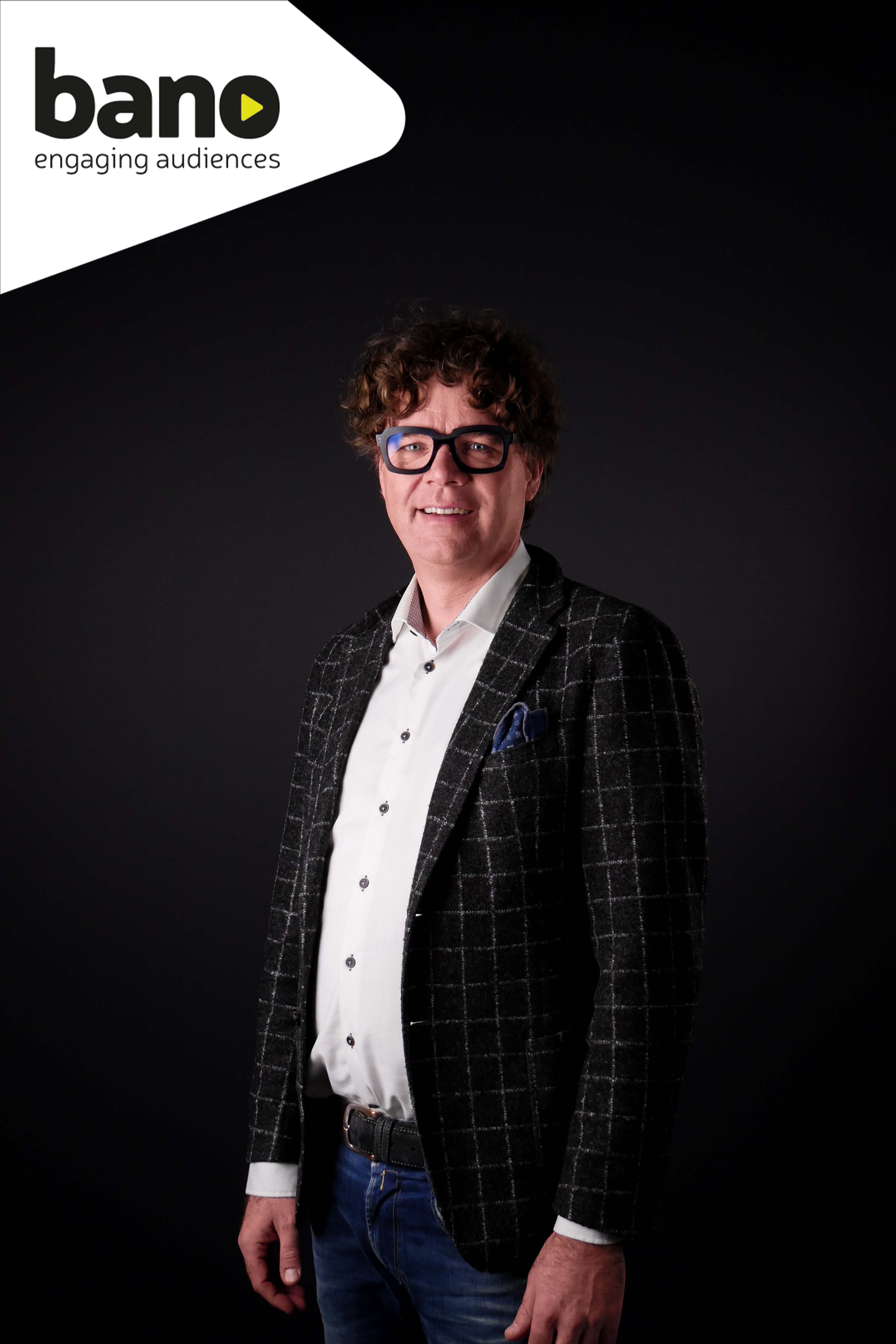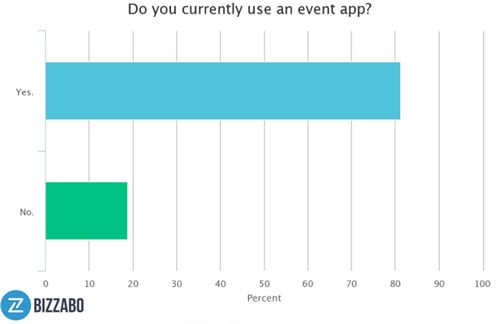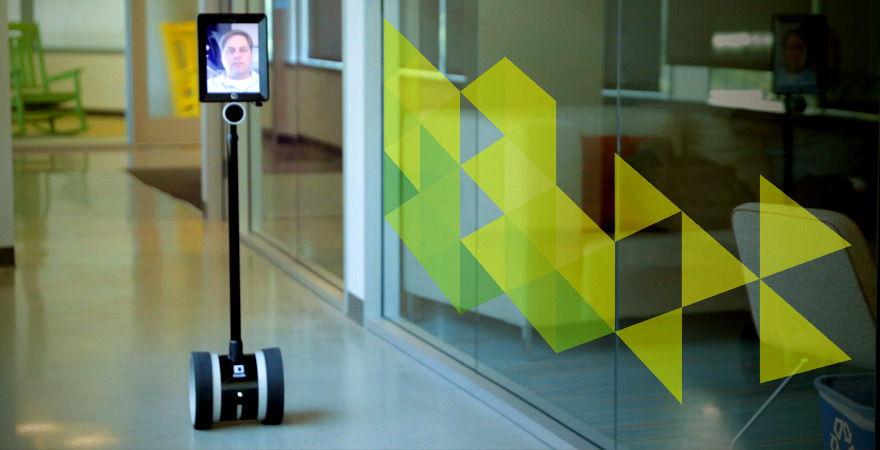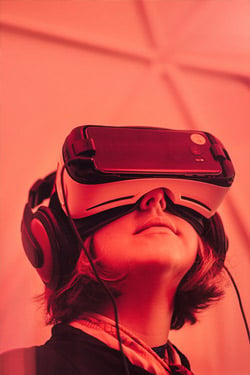10 trends in events 2021: are you ready?
Every year there are a number of trends to be seen when it comes to event organization. And this...

Organizing an event is an art in itself. You want to give your visitors an unforgettable experience which add value to them. To create that added value you have to be innovative. This means going with the latest trends in event business. In this message section, we provide the latest development and trends in the event business.
Trends in Events 2018
What are the most important trends in the event industry for the year 2018? How do you play smart in these trends in marketing, communication and technic? Here we share the biggest trends in the event industry. Anticipate the latest trends and bring your event to a higher level. In this Trends in Events article we go in to the next 4 trends:
One of the biggest trends in the event industry is the event App. With an App you create a uniform and compelling brand experience for your visitors. Your visitors will get more excited and will be more involved at your event because of the App. With the App you can also collect valuable data..
An event App is a mobile application, specially developed for the visitors, which has to be downloaded prior to the event. Event Apps are essential for the communication between the visitors, mainly at the start of the event. The event App actually serves as a kind of network platform where visitors get in touch with each other and to form and share their to-go event strategies. The eventual goal of the event App is to improve the event by creating more intuitive, cohesive, and mobile friendly experience.
An event App contains all contents of an event such as an event agenda, a list of speakers and surveys. By making use of the well-structured informative App, the visitors will experience the event more intensive. Such as Apple showed during the World Wide Developer’s Conference (WWDC) of Apple in 2017.
“Your app should include features, content, and UI that elevate it beyond a repackaged website. If your app is not particularly useful, unique, or “app-like,” it doesn’t belong on the App Store. If your App doesn’t provide some sort of lasting entertainment value or is just plain creepy, it may not be accepted”.
The stringent guidelines of Apple for event apps to get in the App store resulted in the branded universal event App. Below are some reasons of why the branded universal event App the best App is to enlarge the exposure of events.
We can’t imagine our society without mobile phones. It will come as no surprise the mobile App is an important asset to event organizers. As the study of Event Manager Blog revealed is that 53% of all event professionals uses an event App. Moreover, a more recent study of Bizzabo has shown that this number now on 80% lies. A study of Global Experience Specialists shows, by using an event App, the positive result of the ROI.

Today’s technological developments are not left behind in the event industry. As virtual and augmented reality are seen as one of the greatest trends in innovation in the event industry. Virtual reality (VR) and augmented reality (AR) deliver visitors a unique experience. We can expect a lot more of this in the future with the continuous development of VR and AR.
Virtual Reality is a 3D environment which is fully computer generated. In most cases you need to wear virtual reality headset with compatible gloves or controllers to get interaction with this virtual world. Virtual Reality should not be confused with 360 degree pictures and videos.
Augmented reality combines computer generated elements with the reality to create an ‘augmented world’. With augmented reality people interact with computer generated animations while moving in the real world. A good example is the recent success of Pokémon Go. As Pokémon realized within less than a month 30 million app downloads, resulting in increased market value of Nintendo of 9 billion dollar.

You may wonder what the exact role is or will be of VR and AR within the event industry. We cannot underestimate this. The potential of VR and AR can provide a complete transformation of the way we discus, participate and interact to events.
“I think people are realizing the potential and embracing the technology. You can really put yourself or others into an experience / space that you can fully experience for yourself. This is ideal for business in foreign countries as you can bring the place to them if traveling isn’t an option… The tech is becoming more affordable and we are starting to see the opportunity now which is very exciting.”
Yeats, an experienced professional in the event industry, is aware of the potential influence VR and AR has to offer. So it will not only affect the technical aspect at events, but it will also give the visitors a more valuable experience.
The event planners today spend a large part of their budget on the location of the event, de speakers, accommodation, catering and other logistic parts. What if you would organize a conference or exhibition with virtual reality, than would many of these costs be canceled.
Organizing an event completely in virtual reality would cost too much at this moment, but when the technology is more developed it will ultimately be much cheaper than the current events.
Virtual presence.
Thanks to the development of teleworking, nowadays it’s easier for the organizers of events to let people from other locations participate in meetings. A perfect example is Double Robotics.
Double is a remote controlled robot who is able to roll around at each type of event. An iPad will be attached to the frame, therefore you are able to see and hear the environment of Double. Through this mobile video conference system visitors are able to communicate with the invited guests/artists at the event. This will give the audience a unique experience they will never forget. Double is the innovation in teleworking.

It would be great if you are able to instruct your visitor during the event and how awesome would it be if visitors know exactly who they are talking to, just by putting on a headset with face recognition.
Al these features are possible with augmented reality. You just need an AR headset, glasses or contact lenses with the related software to be a part of the world of augmented reality.

Maybe it’s still difficult to imagine. It sound amazing, but how does it work? Below you will find a few examples of events in which use is made of augmented reality and virtual reality.
The advantage of AR on VR is that AR is more accessible to people, since there is already some form of use by popular Apps like Snapchat. The newest iPhone X has also an AR function.
At the Consumer Electronics Show in 2017 the movie ‘Hidden Figures’ was promoted using AR technology. Visitors were assigned, by using their smartphone, finding the hidden statues of the movies key players. There were multiple pillars hidden in the room. When visitors would find one of the pillars, they would be able to scan de code from the pillar with their smartphone. After scanning the statue was shown with the associated description in the App. Thru AR people have more interaction with their surroundings, therefore the experience is more intense.
One of the most advanced forms of AR-technique is the Microsoft Hololens. The headset consists of transparent glass that allows pictures and graphics being projected onto each other within the surroundings of the user.
During the Microsoft Build Conference in 2017 the team of Cirque Du Soleil used the Hololens to visualize their whole set/décor. By getting this demonstration the visitors will have a good idea what is and isn’t possible with this technology.
During the SXSW, Anheuser Busch’s experience a garage was set up that was completely dedicated to the German beer brand Budweiser. From a comfortable lounge to a bar with Budweiser beer on tap; the garage was full of different corners of entertainment .
By using the Oculus VR, the participants were extensively guided through the ‘brewery’ garage, which stimulated all their senses. Cold air was blown into the room when entering the refrigerator to create a realistic effect. When they continued their tour they came to a room, where Budweiser employees kept the participants a jar of hop under their nose. All this was done to let the participant experience how Budweiser’s brewing process works, in order to get a better idea of the product and the brand.
VR is very suitable to use as an educational tool for your company or product. As used Bosch, one of the world’s largest engineering companies, VR technology to promote their Gasoline Direct Injection System (GDI) and Quit Cast Brakes, during a road show.
Bosch went seven months on the road with the roadshow to educate thousands car mechanics how to use Bosch’s Cast Brakes and GDI-system as good as possible. This was done by creating different scenarios in which they had to fix things using Bosch’s car parts. For this educational experience was the Oculus Rift being used. Once again it was demonstrated how immersive VR-technology can be and can help to familiarize consumers with your products by placing them in realistic situations.
Virtual reality and augmented reality offer wonderful opportunities for event organizers to let the visitor experience things in the future they will never forget. They people already are very enthusiastic about the experiences and that will only increase in the future.
With the development of VR and AR there is an immediate challenge for all event organizers. How can they ensure that visitors interact with each other, with speakers, with sponsors and organizers? It seems that we are already well on the way to achieve this.
Crowd shaping is considered one of the biggest event management trends that will affect the next few years the event industry. Imagine that you can adjust the variables in real time to the needs of your visitors such as music genre, the temperature of the environment or the volume of the music? Crowd shaping will give the event organizers this opportunity by the use of Apps, gadgets and tools.
Event organizers always try to map the needs of their visitors as good as possible by collecting data, profiles and references. This data is the perfect way to create personal event experiences by crowd shaping. But how do they get to this data?
Visitors can use special check-in Apps on their smartphones or other mobile devices. They log in using their social media accounts. This gives you insight into the preferences of your visitors and also specific questions derived from surveys and GPS localization. Is it too hot in the room? Maybe the music is too loud or does the audience needs a different genre. Ask these questions in the App, and you can respond perfectly to the event experience of your audience.
The first time crowd shaping was used in practice was in 2014 during the Bioreactive concert of Pepsi. Prior to this concert, all visitors were given an interactive wristband. This wristband registered the movements to find out which music brought them to move. The DJ was able to use the data to adapt the music selection on to the energy of the audience. In addition, the wristband was measuring the temperature of the visitors; here could be anticipated by lowering or raising the thermostat. Also could be measured or the volume was too loud for the audience.
The technological development of the last years hasn’t stopped. Since 2014 has crowd shaping been true the necessary development. So crowd shaping is not only possible anymore for the big players like Pepsi, but also for smaller event organizers. In addition, nowadays almost everyone has a smartphone or smartwatch, allowing you in an easy to collect way data by using special Apps.
LISNR is a data-true-audio solution; a new development at which devices using ‘smart tones’ communicate to each other, but then true music. The special App is capable to recognize music true an ultrasonic encoding. By using this App, event organizers are able to send content true all possible audio devices to their target audience. Because of this App Bluetooth, iBeacons and NFC belong to the past. Among sending promo messages, the App can also function as crowd shaping tool.
The Lightwave bracelet is the first tool that was used for crowd shaping. This was during the Bioreactive concert of Pepsi in 2014. This bracelet measures for example movement, heartrate and temperature. Using this bracelet data can be made transparent, making the event fully adaptable to the needs of the visitors. The DJ is able to use the data to adapt his music selection to the needs of the audience. In addition to the bracelets provide a pretty visual picture, they can also be useful for other incidentals, like free drinks when certain energy- or temperature level has been reached based on movements.
Meet Chüne! Chüne is the intelligence digital jukebox which is able to adapt the music lists of locations to the audience. When the visitors check in on for example social media, the music lists will automatically be imported in the locations system. This is done through NFC-device that makes lists by receiving this data, purely based on the preferences of visitors.
One of the most innovative ways of crowd shaping is applied during the event ‘Daybreaker’. This dance party is for everyone who prefers to make their dance moves preferably in the morning. During this event IBM Watson was being used. This self-learning system is capable of getting patterns and connections out of a bundle of data all by itself and also adds an extra dimension to it. By analyzing survey responses and Twitter accounts, a profile was created for each visitor. Based on this profile the event was designed with specific workouts, catering and music styles. Also the energy level of the visitors were tracked by real-time analysis on the interactive dancefloor.
With crowd shaping a disgruntled audience belongs to the past. The flexibility of crowd shaping gives you the opportunity to meet the needs of the visitors perfectly, by gathering data. It will tell whether crowd shaping is still possible within the new European law General Data Protection Regulation (GDPR), which is effective from May 25th 2018. Briefly presents this law more rules on the collection and use of these data, to protect.
The still relatively young branch of events and live communication has been in a nice momentum for the last years. From business trip to a congress to eventually a live event, every organization talent, that has past the revue in the last 30 years, had actually his idea about how events were supposed to look. Also meeting and event design has found its way and knows now exactly how different events has to be given form. A perfect event from a to z, organized from the target, which gives each component its value to make impact.
In the past of the event marketing there has always been people who knew exactly how to give form to an event. They gave the tools to make effective and impactful events. In a creative branch like the event branch there are just a few followers. Which resulted, through the years, different event designers deposited various concepts and designs. These concepts and designs have brought us to the point we are right now. The year 2018, there where everything makes or breaks by making the effect of events measurable, will be the year of the fully accepted method of meeting- and event design. Make sure your event meets the following conditions:
Whatever event it is you organize, either a meeting, business party or congress, always work towards the effect/impact desired to succeed your event.
Erwin Balkema owner of Bano Can we also help you realize a successful event or exhibition participation online or hybrid? Bano Event Technology
Every year there are a number of trends to be seen when it comes to event organization. And this...
Technology is developing at breakneck speed. This is also noticeable in the event industry....
Hoe meer evenementen er bij komen, des te meer keuzes jouw potentiële publiek krijgt. Tijd...